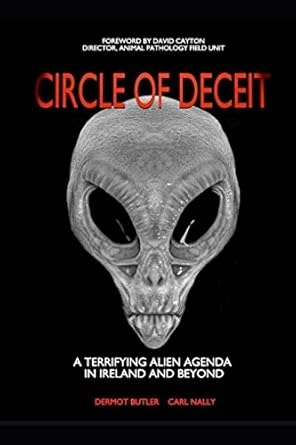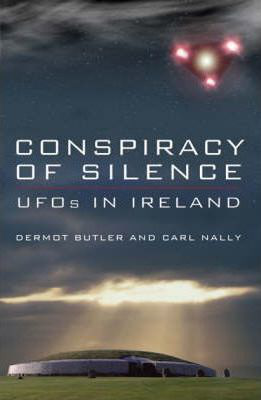The Enigma of Prototaxites: A Prehistoric Giant Defies Classification
Science/Medical/Technology
Wednesday 26th, March 2025
3 minute read.
A newly unearthed study has reignited debate over one of Earth’s most enigmatic prehistoric organisms. Prototaxites, a towering, trunk-like structure that dominated landscapes between 420 and 375 million years ago, has puzzled scientists for over a century. Once thought to be a giant alga, then a fungus, and even a primitive tree, fresh research suggests it may belong to an entirely unknown branch of life.
First discovered in 1843, Prototaxites fossils were initially misidentified as decaying coniferous trees. The organism reached heights of up to 8 metres and a width of 1 metre, making it the largest land-dwelling organism of its time. In a world where most plants were barely knee-high, Prototaxites would have towered over the landscape, providing a stark contrast to the diminutive flora of the Silurian and Devonian periods.
For decades, researchers debated its true identity. A significant breakthrough came in 2007 when Kevin Boyce of Stanford University and colleagues analysed carbon isotopes in the fossils. Their findings indicated that Prototaxites did not photosynthesise like plants but absorbed carbon from organic sources, a behaviour characteristic of fungi.
However, a recent preprint study led by Corentin Loron from the University of Edinburgh is challenging that assumption. Examining Prototaxites taiti, a smaller species preserved in Scotland’s Rhynie chert fossil bed, the team discovered crucial chemical differences between it and known fungi from the same site.
The key finding was the absence of chitin, a fundamental component of fungal cell walls. Instead, Prototaxites contained lignin-like compounds, a material primarily associated with plants. This unexpected discovery has raised fresh questions about its classification.
Loron and his team described Prototaxites as a large, multicellular structure composed of different types of tubes, filled with complex biopolymers resembling lignin, and feeding on decaying organic matter. Such a combination of traits does not match any known modern life form.
Kevin Boyce, who once supported the fungal theory, acknowledged the shift in thinking. “Given the phylogenetic information we have now, there is no good place to put Prototaxites in the fungal phylogeny,” he explained.
He continued: “So maybe it is a fungus, but whether a fungus or something else entirely, it represents a novel experiment with complex multicellularity that is now extinct and does not share a multicellular common ancestor with anything alive today.”
The possibility that Prototaxites belonged to an entirely separate evolutionary lineage challenges our understanding of early life on Earth. If confirmed, it would mean that our planet once hosted organisms that do not fit within any of the currently recognised kingdoms of life. This raises the possibility that other such ‘lost lineages’ might have existed—and perhaps remain undiscovered in the fossil record.
Brett Summerell of the Botanic Gardens of Sydney urged caution in jumping to conclusions. “There are too many unknowns to say it is a unique lineage at this stage,” he remarked.
He also pointed out that its classification within the fungal kingdom was always “somewhat nebulous,” especially given its extraordinary size. “The conclusion that it is a completely unknown eukaryote certainly creates an air of mystery and intrigue around it.”
Whether Prototaxites was a colossal fungus, a primitive plant, or something entirely new, its presence on prehistoric Earth offers an exciting glimpse into a world very different from our own. The study of this strange organism continues, and as new techniques emerge, scientists may one day unravel the full story of this ancient giant.
For now, the mystery of Prototaxites remains an intriguing reminder of just how much we have yet to discover about Earth’s distant past.
First discovered in 1843, Prototaxites fossils were initially misidentified as decaying coniferous trees. The organism reached heights of up to 8 metres and a width of 1 metre, making it the largest land-dwelling organism of its time. In a world where most plants were barely knee-high, Prototaxites would have towered over the landscape, providing a stark contrast to the diminutive flora of the Silurian and Devonian periods.
For decades, researchers debated its true identity. A significant breakthrough came in 2007 when Kevin Boyce of Stanford University and colleagues analysed carbon isotopes in the fossils. Their findings indicated that Prototaxites did not photosynthesise like plants but absorbed carbon from organic sources, a behaviour characteristic of fungi.
However, a recent preprint study led by Corentin Loron from the University of Edinburgh is challenging that assumption. Examining Prototaxites taiti, a smaller species preserved in Scotland’s Rhynie chert fossil bed, the team discovered crucial chemical differences between it and known fungi from the same site.
The key finding was the absence of chitin, a fundamental component of fungal cell walls. Instead, Prototaxites contained lignin-like compounds, a material primarily associated with plants. This unexpected discovery has raised fresh questions about its classification.
Loron and his team described Prototaxites as a large, multicellular structure composed of different types of tubes, filled with complex biopolymers resembling lignin, and feeding on decaying organic matter. Such a combination of traits does not match any known modern life form.
Kevin Boyce, who once supported the fungal theory, acknowledged the shift in thinking. “Given the phylogenetic information we have now, there is no good place to put Prototaxites in the fungal phylogeny,” he explained.
He continued: “So maybe it is a fungus, but whether a fungus or something else entirely, it represents a novel experiment with complex multicellularity that is now extinct and does not share a multicellular common ancestor with anything alive today.”
The possibility that Prototaxites belonged to an entirely separate evolutionary lineage challenges our understanding of early life on Earth. If confirmed, it would mean that our planet once hosted organisms that do not fit within any of the currently recognised kingdoms of life. This raises the possibility that other such ‘lost lineages’ might have existed—and perhaps remain undiscovered in the fossil record.
Brett Summerell of the Botanic Gardens of Sydney urged caution in jumping to conclusions. “There are too many unknowns to say it is a unique lineage at this stage,” he remarked.
He also pointed out that its classification within the fungal kingdom was always “somewhat nebulous,” especially given its extraordinary size. “The conclusion that it is a completely unknown eukaryote certainly creates an air of mystery and intrigue around it.”
Whether Prototaxites was a colossal fungus, a primitive plant, or something entirely new, its presence on prehistoric Earth offers an exciting glimpse into a world very different from our own. The study of this strange organism continues, and as new techniques emerge, scientists may one day unravel the full story of this ancient giant.
For now, the mystery of Prototaxites remains an intriguing reminder of just how much we have yet to discover about Earth’s distant past.



